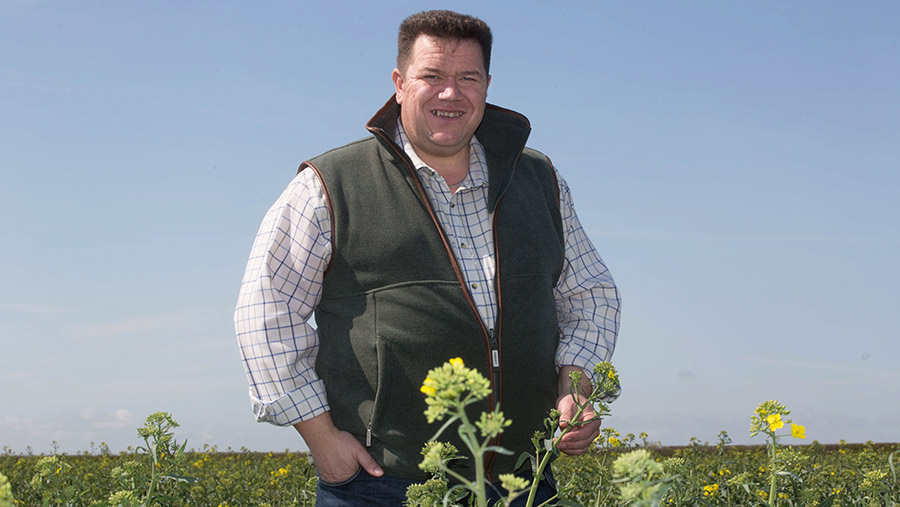Farmer Focus: The lowest blackgrass influx for many years
 Keith Challen © Tim Scrivener
Keith Challen © Tim Scrivener Crops are racing through their growth stages, mainly forced on by drought.
With no meaningful rain in April and May, things were getting desperate. But, thankfully, we received 34mm of rain on 5 June, which was as good as money in the bank.
The flag-leaf fungicide timing was at least a week early compared with our average timings. On the whole, crops look well.
See also: Crop Watch: Brome problems and rising wheat disease pressure
We have sprayed off a 10ha patch of blackgrass across the wheat acreage – the lowest for a number of years.
Where we tried double-drilling by either using real-time kinematics to split the rows or drilling at 90deg with the second pass, we reduced the amount of bare ground between the wheat rows, consequently cutting blackgrass numbers.
We also tried hoeing wheat this spring and, although it was successful, conditions very soon became too dry, which meant we could only hoe a few acres.
Interestingly, the hoe stimulated a late flush of single-tillered blackgrass plants, which are struggling to get out of the canopy.
At the time of writing, we are midway through our elderflower picking season. Things are going well, with higher-than-average flower numbers.
I hope this bodes well for the wheat harvest.
The elders seem less affected by the drought this year. I think having had their shallow roots severed in previous spring droughts has forced them to change the root architecture and, where we have dug up some plants, they are showing more deep roots.
I would like to say thanks to the team at Agrii. I’ve just returned from their heavy land trial site at Stow Longa and, although the land there is not as heavy as the clays at Belvoir, they give a very good indication after eight years of establishment trials of what you can achieve by using cultural controls in addition to chemical control.
As with all these things, there is no silver bullet, but with patience and skill they’ve demonstrated you can get very good results.
I’m just struggling to find a can of patience. If anyone can sell me some, let me know.


